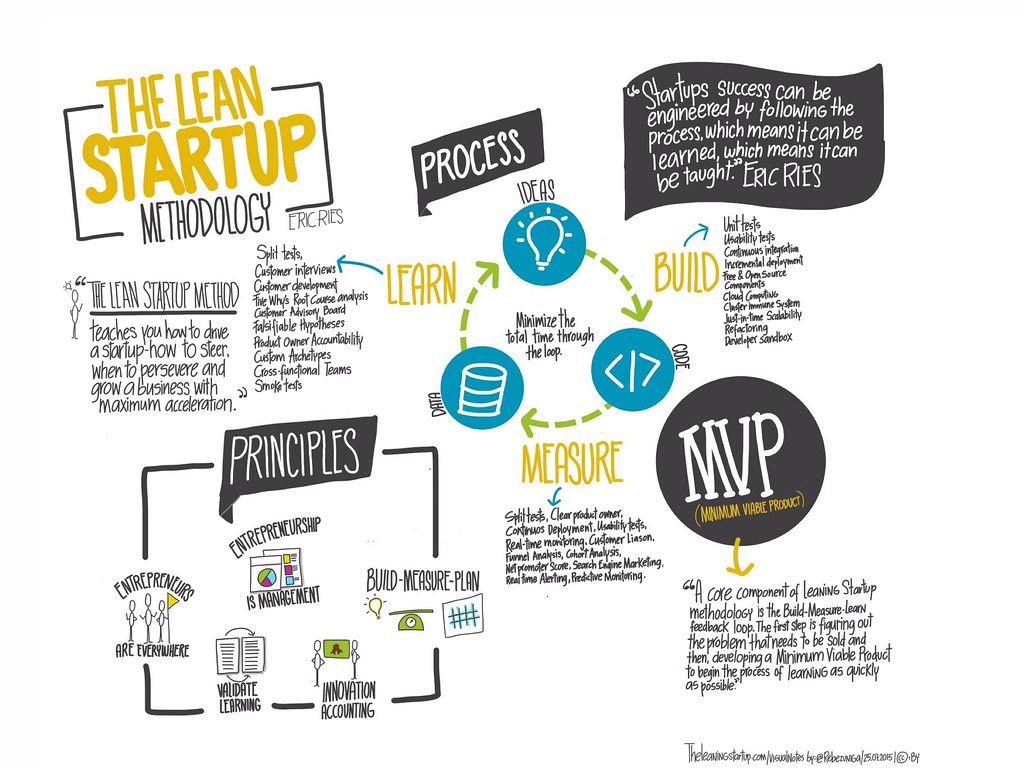- Get link
- X
- Other Apps
- Get link
- X
- Other Apps
Introduction
Design Thinking
Design thinking is an iterative process in which we thrive to understand the user’s pain, challenge assumptions, redefine problems, in order to create new strategies and solutions.
It’s a process that starts with the people you’re designing for and ends with new solutions that are tailor-made to suit their needs. Design Thinking is all about building a deep empathy with the people you’re designing for; generating tons of ideas; building a bunch of prototypes; sharing what you’ve made with the people you’re designing for, and eventually putting your innovative new solution out in the World.
The design thinking framework follows an overall flow of 1) understand, 2) explore, and 3) materialize. Within these larger buckets fall the 6 phases: empathize, define, ideate, prototype, test, and implement.
- First, you should employ empathy. This is the development of a deep understanding of the human needs that are in play.
- The next step is to look at problems from a new light by involving human-centric methods.
- Ensure that you come up with multiple ideas during the sessions.
- Next, come up with a prototype, which is a miniature version of the new product or feature.
- Finally, carry out rigorous tests on the finished product or feature, and make changes where necessary.
 |
| Design Thinking |
Why Design Thinking?
› Refine strategy.
› Minimize risk.
› Reduce costs.
› Energize employees.
› Improve speed.
› Design better solutions.
› Delight customers.
Lean Startup
«if you're not embarrassed by the first version
of your product you've launched too late.» Reid Hoffman
Lean Startup is a methodology which aims to shorten product development cycles and rapidly discover if a proposed business model is viable. Teams start by building a minimum set of features that satisfy early users (MVP).
Teams then test the assumptions they made about key features early-on with users and measure the data they acquire from experiments. In that way, evidence-based decisions can be made about the direction the product/service should be moving into for the next iteration.
In essence, the goal is to find a product-market fit by moving a Minimum Viable Product (MVP) through the Build-Measure-Learn feedback loop.
This process is repeated in continuous loops until the product-market fit is reached. The goal is to reach a state where the data proves the team has built a product/service that accurately addresses the needs/demands of the market.
Agile
Agile moves the product from MVP to pilot and then to production. It helps you create a product that is dynamic and evolves with user expectations. Regular user feedback makes the Agile process effective. This involves the following steps:
- Define the project goals
- Create user stories
- Build backlogs
At the end of each sprint, demos are shown to the user to gather feedback and discover needs that may not have arisen before. Programmers often use low code platforms to collaborate on functionality, validate assumptions, make and preview changes instantly. Agile methodology is an iterative process where the product is continuously developed to align with business and user needs
So, while Design Thinking provides the solution, the next aspect is how to deliver those solutions to the marketplace, and it is here we see what Agile is about. Agile works by focusing on smaller bits of the larger project at a time, delivering value quickly and adapting or changing based on real-time feedback.
If a team discovers recommends a redesign or pivot, the business would be wise to listen; yet consequences of a change increase with every project phase that elapses. While some delivery models (such as agile versus waterfall development) may be more adept at handling changes, all project types and delivery models will experience increasing costs and resistance during later phases of project work.
If a team discovers recommends a redesign or pivot, the business would be wise to listen; yet consequences of a change increase with every project phase that elapses. While some delivery models (such as agile versus waterfall development) may be more adept at handling changes, all project types and delivery models will experience increasing costs and resistance during later phases of project work.
Fail fast, fail cheap!
We can summarize each methodology's highlighted aspect below:
Design Thinking: Design thinking helps us come up with better ideas
Lean Startup: The lean startup helps us turn those ideas into business models that work
Agile: Agile helps us deliver the product to market in a fast, incremental way
Conclusion
To simplify, design thinking helps us identify the right problem to solve, the lean startup helps us turn those ideas into business models that work and agile helps us deliver the product to market in a fast, incremental way so that we get ongoing feedback, adapt and deliver precisely what the customer wants.
By combining design thinking, the lean startup and agile, you are far more likely to not only come up with better ideas but turn those ideas into viable money makers and deliver them in a way that creates immediate value for customers, doesn’t result in cost and schedule blowouts - synonymous with innovation at large companies - and give your employees the opportunity to partake in more rewarding and fulfilling work.
Emel
Jan 2020
References:
Startup Hukuku
https://www.etohum.com/blog-tr/lean-startup-nedir-girisiminiz-lean-startup-felsefesini-uyguluyor-mu/
https://www.mendix.com/blog/design-thinking-vs-agile-combine-problem-finding-problem-solving-better-outcomes/
https://dzone.com/articles/design-thinking-and-agile-methodology-for-innovati
The Total Economic Impact™ Of IBM’s Design Thinking Practice by Forrester
https://voltagecontrol.co/8-great-design-thinking-examples-a01d6d0debbe
https://firstround.com/review/How-design-thinking-transformed-Airbnb-from-failing-startup-to-billion-dollar-business/
https://www.collectivecampus.io/blog/does-design-thinking-actually-work
- Get link
- X
- Other Apps



